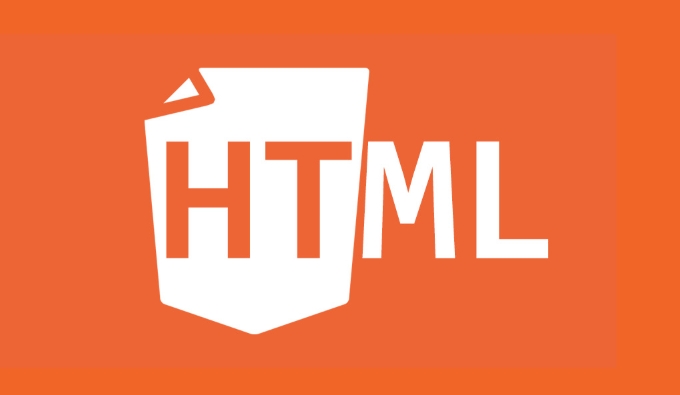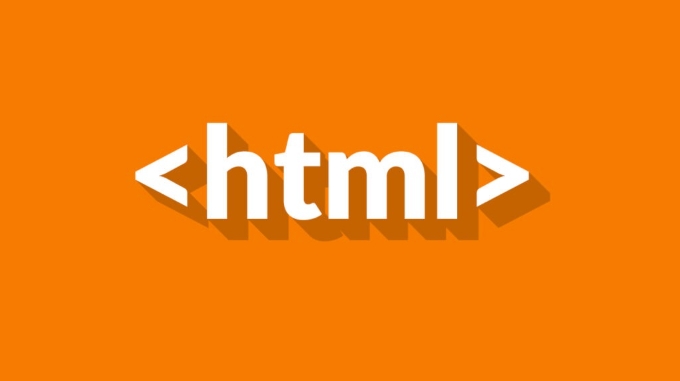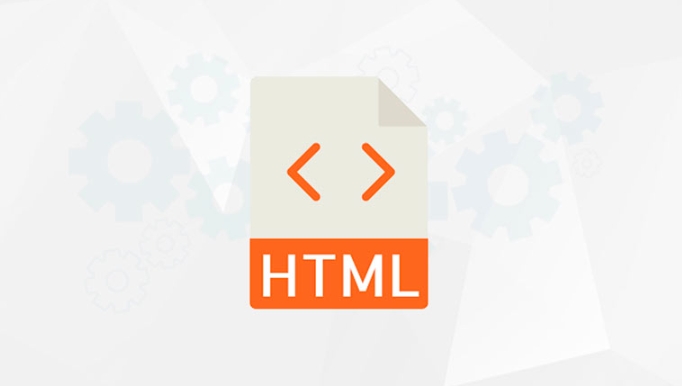How to use HTML dialog elements to implement pop-up function? 1. Use the <dialog> tag to define the pop-up structure, and control the display through JavaScript's showModal() or show() method; 2. Set width, shadow, mask layer and other styles to beautify the pop-up window; 3. Add interactive optimizations such as clicking on the mask to close, ESC key to close, and preventing page scrolling. The method is well-structured and does not require additional library support, and is suitable for most scenarios.

Pop-up window function is very common in web design, such as login boxes, prompt information or operation confirmation. In the past, we usually used div plus CSS and JavaScript to implement these functions, but now HTML provides a native element: <dialog></dialog> , which can create pop-ups more concisely.

Basic usage: How to display a pop-up window?
<dialog></dialog> is a tag specially used to display dialog boxes, and the browser natively supports opening and closing. You can use the showModal() method of JavaScript to make it appear in the form of a modal box, or you can use show() method as a non-modal box.
<dialog id="myDialog"> <p>This is a simple pop-up content</p> <button id="closeBtn">Close</button> </dialog> <button id="openBtn">Open pop-up window</button>
Corresponding JS part:

const dialog = document.getElementById('myDialog'); document.getElementById('openBtn').onclick = () => dialog.showModal(); document.getElementById('closeBtn').onclick = () => dialog.close();
This allows you to quickly implement a pop-up window with a close button.
Style control: How to make pop-ups look better?
Although <dialog> has a default style (such as a background translucent mask), you can completely customize its appearance. You can set width , margin , border , box-shadow and other properties like you would for ordinary elements.

Some common style adjustments include:
- Set width or maximum width to avoid pop-up windows being too wide to affect reading
- Add a little shadow to pop-up windows to improve visual hierarchy
- Use
position: fixedor rely on the browser to display in the center - The background mask layer can be set separately using
::backdroppseudo-class
For example:
dialog {
width: 300px;
padding: 20px;
border: none;
box-shadow: 0 4px 12px rgba(0,0,0,0.2);
}
dialog::backdrop {
background-color: rgba(0, 0, 0, 0.5);
} Note that the support situations of different browsers are slightly different, especially Safari's support for ::backdrop is late, but overall, modern browsers have already supported it.
Interaction optimization: How to enhance user experience?
In addition to basic opening and closing, you can also add some tips to improve the interactive experience.
- Clicking the mask to close the pop-up window : By default, clicking the mask will not close the pop-up window, but you can judge whether the event source is the mask layer by listening to
click. - ESC key close pop-up window : ESC close is supported by default. If you call
showModal(), no additional code is needed. - Prevent page scrolling : When pop-up windows are displayed, you can add
overflow: hiddentobodyto prevent background scrolling. - Multiple pop-up window nesting processing : If multiple pop-up windows need to be displayed overlayed, pay attention to
z-indexand order issues.
Sample code snippet:
dialog.addEventListener('click', (e) => {
if (e.target === dialog) {
dialog.close();
}
});This code implements the function of clicking on the mask to close the pop-up window.
Basically that's it. Using the <dialog></dialog> element well can make pop-ups simpler and clearer, and there is no need to introduce additional libraries. Although it is not omnipotent, it is enough in most scenarios.
The above is the detailed content of The HTML `dialog` Element for Pop-up Boxes. For more information, please follow other related articles on the PHP Chinese website!

Hot AI Tools

Undress AI Tool
Undress images for free

Undresser.AI Undress
AI-powered app for creating realistic nude photos

AI Clothes Remover
Online AI tool for removing clothes from photos.

Clothoff.io
AI clothes remover

Video Face Swap
Swap faces in any video effortlessly with our completely free AI face swap tool!

Hot Article

Hot Tools

Notepad++7.3.1
Easy-to-use and free code editor

SublimeText3 Chinese version
Chinese version, very easy to use

Zend Studio 13.0.1
Powerful PHP integrated development environment

Dreamweaver CS6
Visual web development tools

SublimeText3 Mac version
God-level code editing software (SublimeText3)

Hot Topics
 Applying Semantic Structure with article, section, and aside in HTML
Jul 05, 2025 am 02:03 AM
Applying Semantic Structure with article, section, and aside in HTML
Jul 05, 2025 am 02:03 AM
The rational use of semantic tags in HTML can improve page structure clarity, accessibility and SEO effects. 1. Used for independent content blocks, such as blog posts or comments, it must be self-contained; 2. Used for classification related content, usually including titles, and is suitable for different modules of the page; 3. Used for auxiliary information related to the main content but not core, such as sidebar recommendations or author profiles. In actual development, labels should be combined and other, avoid excessive nesting, keep the structure simple, and verify the rationality of the structure through developer tools.
 How to group options within a select dropdown using html?
Jul 04, 2025 am 03:16 AM
How to group options within a select dropdown using html?
Jul 04, 2025 am 03:16 AM
Use tags in HTML to group options in the drop-down menu. The specific method is to wrap a group of elements and define the group name through the label attribute, such as: 1. Contains options such as apples, bananas, oranges, etc.; 2. Contains options such as carrots, broccoli, etc.; 3. Each is an independent group, and the options within the group are automatically indented. Notes include: ① No nesting is supported; ② The entire group can be disabled through the disabled attribute; ③ The style is restricted and needs to be beautified in combination with CSS or third-party libraries; plug-ins such as Select2 can be used to enhance functions.
 Implementing Clickable Buttons Using the HTML button Element
Jul 07, 2025 am 02:31 AM
Implementing Clickable Buttons Using the HTML button Element
Jul 07, 2025 am 02:31 AM
To use HTML button elements to achieve clickable buttons, you must first master its basic usage and common precautions. 1. Create buttons with tags and define behaviors through type attributes (such as button, submit, reset), which is submitted by default; 2. Add interactive functions through JavaScript, which can be written inline or bind event listeners through ID to improve maintenance; 3. Use CSS to customize styles, including background color, border, rounded corners and hover/active status effects to enhance user experience; 4. Pay attention to common problems: make sure that the disabled attribute is not enabled, JS events are correctly bound, layout occlusion, and use the help of developer tools to troubleshoot exceptions. Master this
 Configuring Document Metadata Within the HTML head Element
Jul 09, 2025 am 02:30 AM
Configuring Document Metadata Within the HTML head Element
Jul 09, 2025 am 02:30 AM
Metadata in HTMLhead is crucial for SEO, social sharing, and browser behavior. 1. Set the page title and description, use and keep it concise and unique; 2. Add OpenGraph and Twitter card information to optimize social sharing effects, pay attention to the image size and use debugging tools to test; 3. Define the character set and viewport settings to ensure multi-language support is adapted to the mobile terminal; 4. Optional tags such as author copyright, robots control and canonical prevent duplicate content should also be configured reasonably.
 How to associate captions with images or media using the html figure and figcaption elements?
Jul 07, 2025 am 02:30 AM
How to associate captions with images or media using the html figure and figcaption elements?
Jul 07, 2025 am 02:30 AM
Using HTML sums allows for intuitive and semantic clarity to add caption text to images or media. 1. Used to wrap independent media content, such as pictures, videos or code blocks; 2. It is placed as its explanatory text, and can be located above or below the media; 3. They not only improve the clarity of the page structure, but also enhance accessibility and SEO effect; 4. When using it, you should pay attention to avoid abuse, and apply to content that needs to be emphasized and accompanied by description, rather than ordinary decorative pictures; 5. The alt attribute that cannot be ignored, which is different from figcaption; 6. The figcaption is flexible and can be placed at the top or bottom of the figure as needed. Using these two tags correctly helps to build semantic and easy to understand web content.
 Best HTML tutorial for beginners in 2025
Jul 08, 2025 am 12:25 AM
Best HTML tutorial for beginners in 2025
Jul 08, 2025 am 12:25 AM
TolearnHTMLin2025,chooseatutorialthatbalanceshands-onpracticewithmodernstandardsandintegratesCSSandJavaScriptbasics.1.Prioritizehands-onlearningwithstep-by-stepprojectslikebuildingapersonalprofileorbloglayout.2.EnsureitcoversmodernHTMLelementssuchas,
 How to embed content from another site using the html iframe tag?
Jul 04, 2025 am 03:17 AM
How to embed content from another site using the html iframe tag?
Jul 04, 2025 am 03:17 AM
Use tags to embed other website content into your own web page. The basic syntax is:, you can add width, height, and style="border:none;" to control the appearance; in order to achieve responsive layout, you can set the size through percentage or use containers to combine padding and absolute positioning to maintain the aspect ratio, while paying attention to cross-domain restrictions, loading performance, SEO impact, and security policies. Common uses include embedding maps, third-party forms, social media content and internal system integration.
 HTML for email templates tutorial
Jul 10, 2025 pm 02:01 PM
HTML for email templates tutorial
Jul 10, 2025 pm 02:01 PM
How to make HTML mail templates with good compatibility? First, you need to build a structure with tables to avoid using div flex or grid layout; secondly, all styles must be inlined and cannot rely on external CSS; then the picture should be added with alt description and use a public URL, and the buttons should be simulated with a table or td with background color; finally, you must test and adjust the details on multiple clients.






